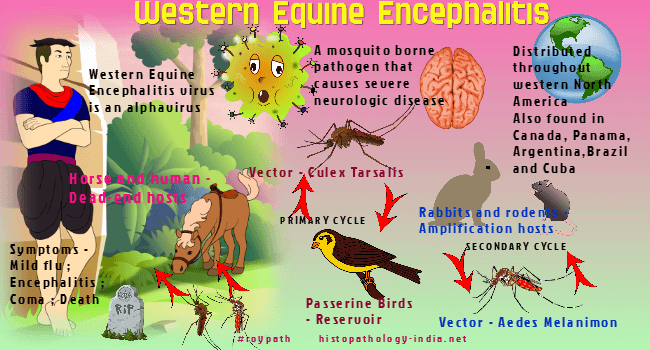|

Custom Search
|
|
Infectious Disease Online Pathology of Western Equine Encephalitis
|

|
Western equine encephalitis is encountered primarily in the western and central United States and Canada (it is also found, less frequently, in Brazil). Western equine encephalitis spread primarily by the vector mosquito Culex tarsalis. Culex tarsalis is a mosquito that is found on the West Coast of the United States and prefers warm, moist environments. In these locations, cycles of wild bird and mosquito infectivity allow the virus to remain endemic. Thus mosquitoes are the primary vector and birds reservoirs. Epidemic outbreaks in the horses or pheasant population often precede human epidemics. Symptoms range from mild flu-like illness to frank encephalitis, coma and death. The annual incidence of the virus varies greatly because of the presence of endemic and epidemic forms.
|
|
|
Copyright © 2022 histopathology-india.net

